As Christmas nears, it seems nice to see doves in the garden! 🙂 And this is my most regular or most seen dove, the White-winged Dove (my gallery link).
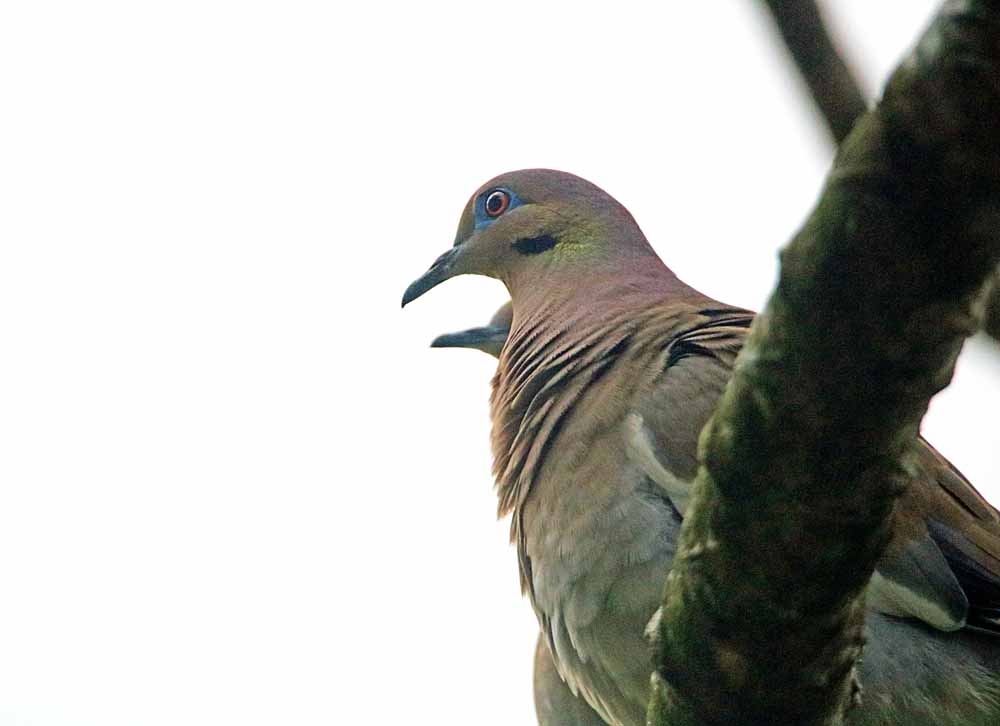
As Christmas nears, it seems nice to see doves in the garden! 🙂 And this is my most regular or most seen dove, the White-winged Dove (my gallery link).

One of our two woodpeckers with the “Woody Woodpecker” hair is the Lineated Woodpecker, Dryocopus lineatus, (my gallery link) “Carpintero Lineado” en español, with the Pale-billed Woodpecker being the other big hairdo woodpecker (his whole head is red!). 🙂 This one sensed that my Cecropia Tree is dying and landed first on the trunk then went straight to a dead limb looking for insects to eat. Because of their “pecking/eating” they tend to stay longer in a tree, making them sometimes easier to photograph than other birds, though the overcast afternoon was poor light that day with a glary white sky. 🙁 Here are two shots from this past Monday. See the gallery for more from all over Costa Rica. He is found only in Central & South America, with North America’s most similar bird being the Pileated Woodpecker (linked to my gallery of one seen on Nashville’s Stones River Greenway).
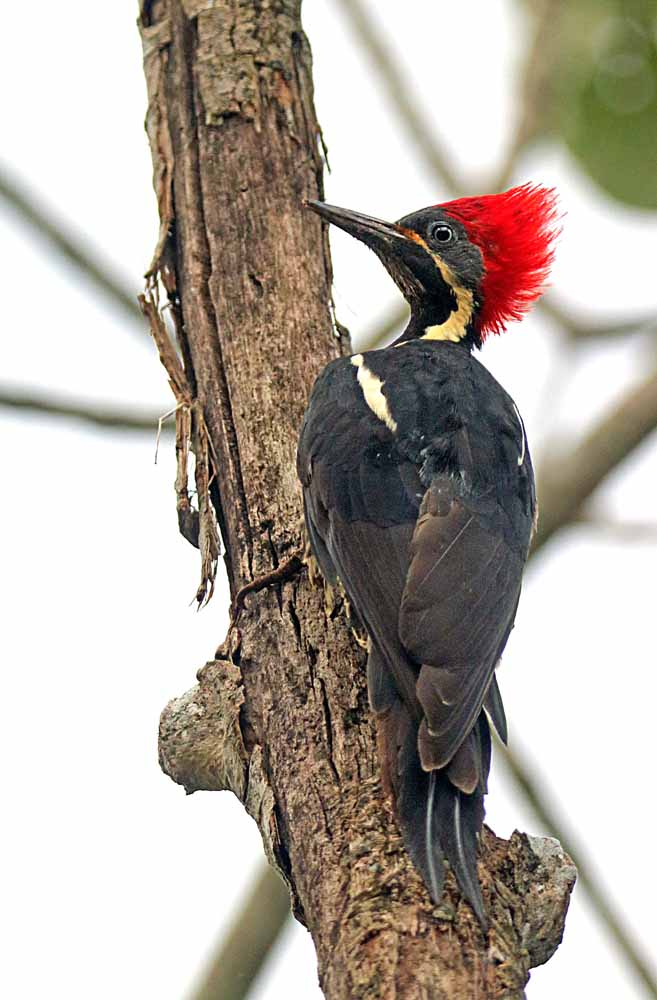
Is back in Costa Rica from “up north” and no longer called just “Yellow Warbler” as in the past but has a new official name of Northern Yellow Warbler – Setophaga aestiva (linked to my gallery) and what is used by eBird and iNaturalist. Some older books still say just Yellow Warbler and the Princeton Field Guide says American Yellow Warbler. I’m not sure which names are harder to keep up with, Birds or Butterflies! 🙂 They seem to both be changing frequently. This particular bird showed up on December 1 in my Cecropia Tree. Here’s two shots of him/her . . .
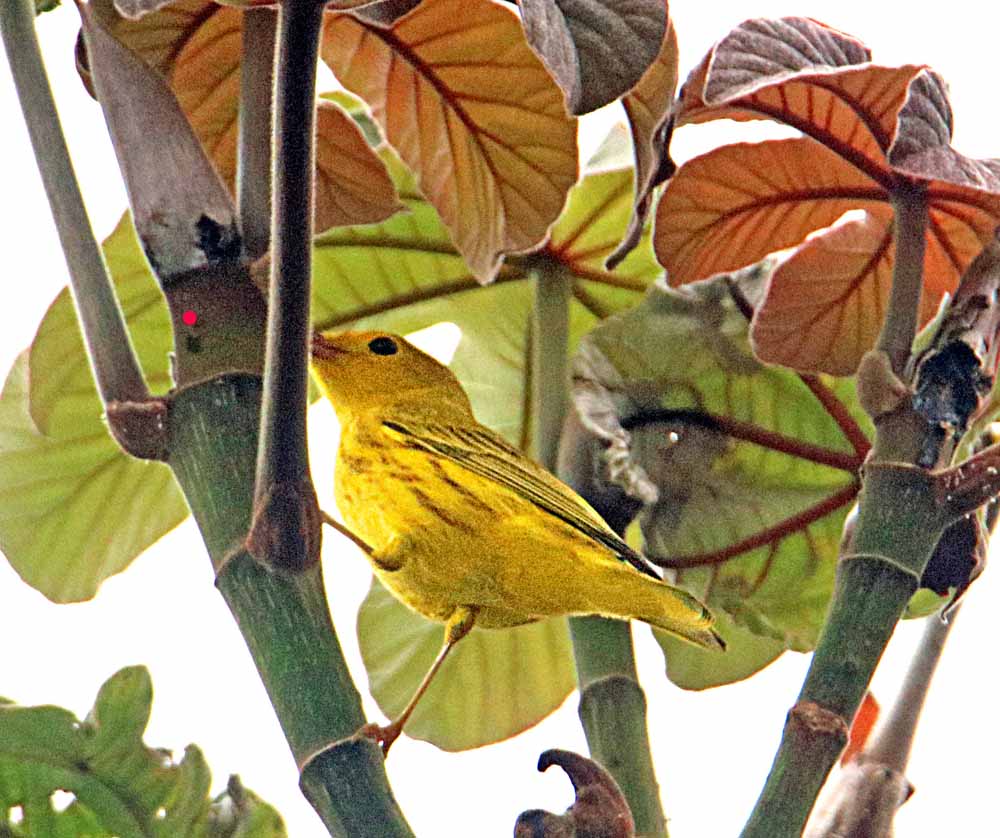
Some of you may remember that back in 2017 I started a collection of handmade “Artisan Birds,” mainly from artists in Costa Rica, but a few from other Central American countries and ended up with 2 from countries outside Central America. The collection has not grown much since the first two years or so, but I finally I now have a better tree on which to display them.

And you can see all of my “Artisan Birds” collection with labels of where they are each from in my photo gallery: My Artisan Birds Tree
The first year (2017) was the best display tree, a dead tree branch with lots of branches and I never found another like that. Last year I finally bought an artificial green bush or shrub which I kept most of the year in my living room with or without the artisan birds, but never liked it and the artificial limbs were too weak and droopy and earlier this month it went to the garbage man. And I vowed to find a better one this year!
Well, last week I found this all white artificial small tree with little tiny lights and decided that was it! But again, the limbs were too weak and droopy to handle the small weight of my tiny ornaments! (See the BEFORE & AFTER pictures below.) Grrrrr! BUT, “where there’s a will there’s a way!” I figured out how they made it with a real little tree trunk and wires going up and out for limbs, “they” just used too thin or flimsy wires. I thought, “why couldn’t they have used stiffer (heavier) wires?” Then I realized that if I could tell them how they “should” have done it, I could just do it myself! And I did! 🙂
I went to the main hardware store here in Atenas (La Ferretería Vargas & Hijos) and bought some heavier or stiffer wire (12.5 m roll) for a fraction of what the 3 rolls of white electrical tape (cinta blanca) cost and two days later I have totally “rewired” my little Christmas tree with the new heavy wire held to the older thinner wires with lots of white electrical tape wrapped around every centimeter of every limb and the trunk! A LOT OF WORK! But, ta daa! I now have a new tree that is strong enough to hold the artisan birds! 🙂 Here are two pairs of “Before & After” photos to show you what I accomplished . . .
Continue reading “My Christmas Tree Adventure”This Rufous-backed Wren (my gallery link) stopped in one of my Nance Trees, not for a berry (wrong time of year) but for an insect snack out of the little Air Plant growing on the tree. 🙂
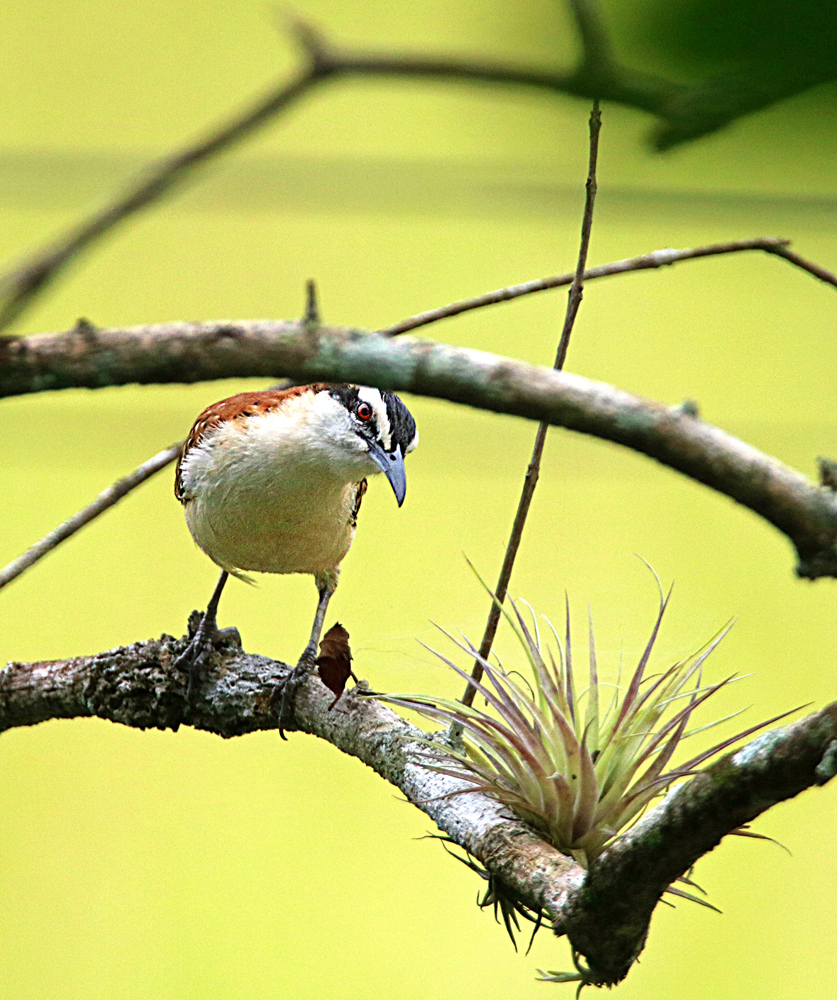
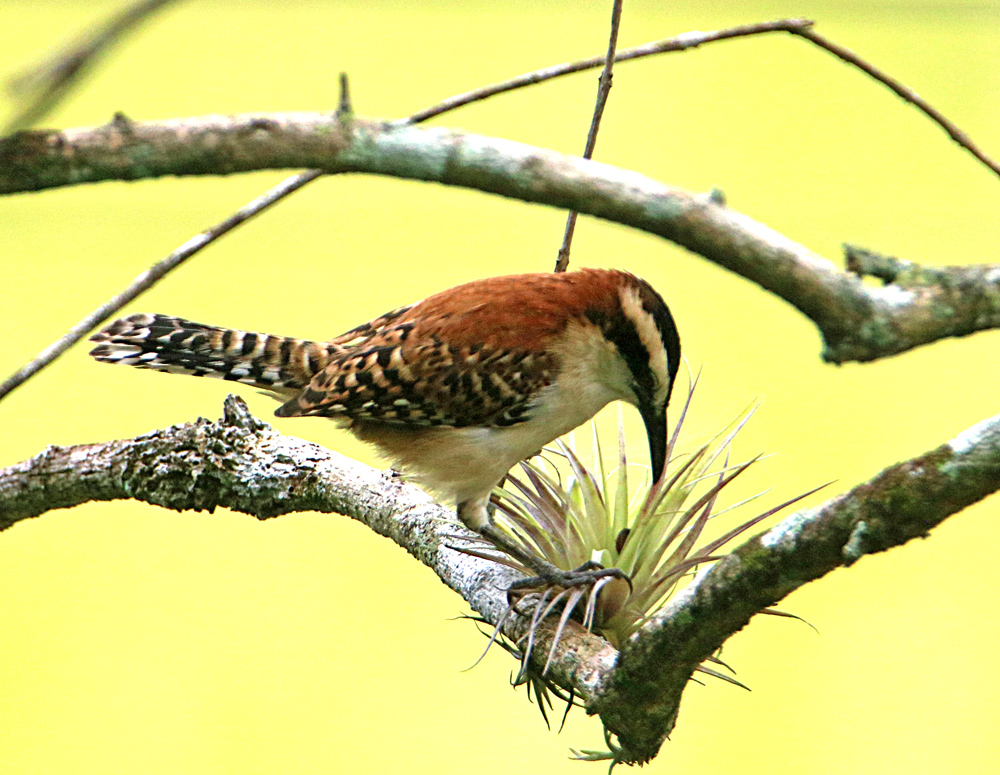
¡Pura Vida!
I’m glad this favored bird visits my garden often enough for me to see at least once a month now! See more photos from multiple locations in my gallery: Lesson’s Motmot, Momotus lessonii. Purely a Central American bird, found only from Panama to Southern Mexico.
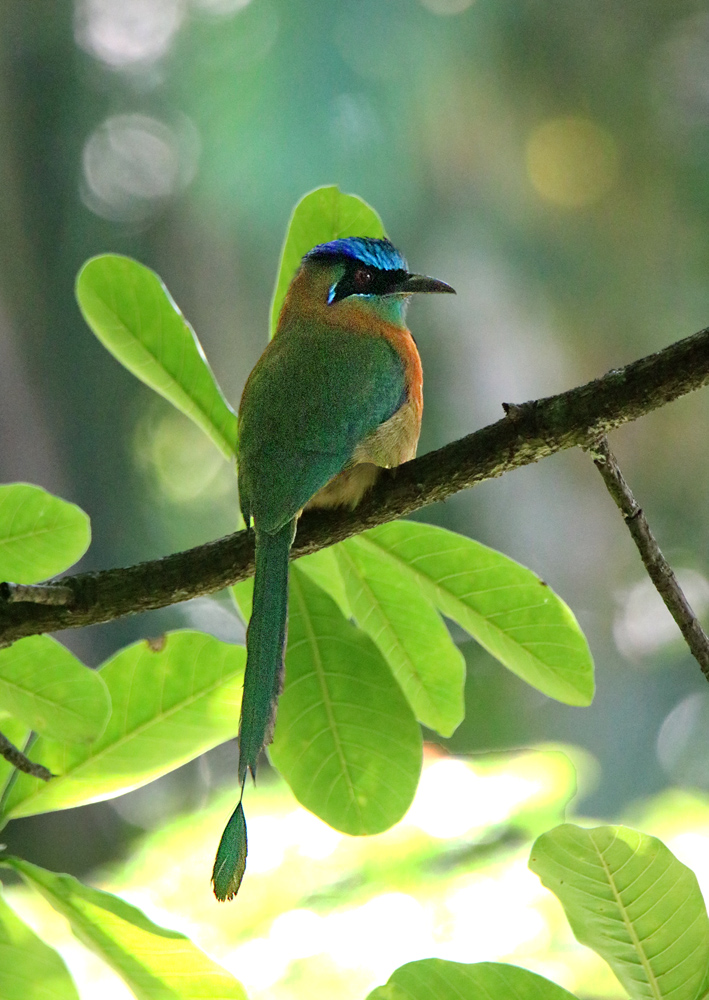
He’s becoming a favorite among the flowers and not sure he comes to the feeders that are dominated by the Rufous-tailed. See more photos from this week in the GALLERY: Blue-vented Hummingbird.
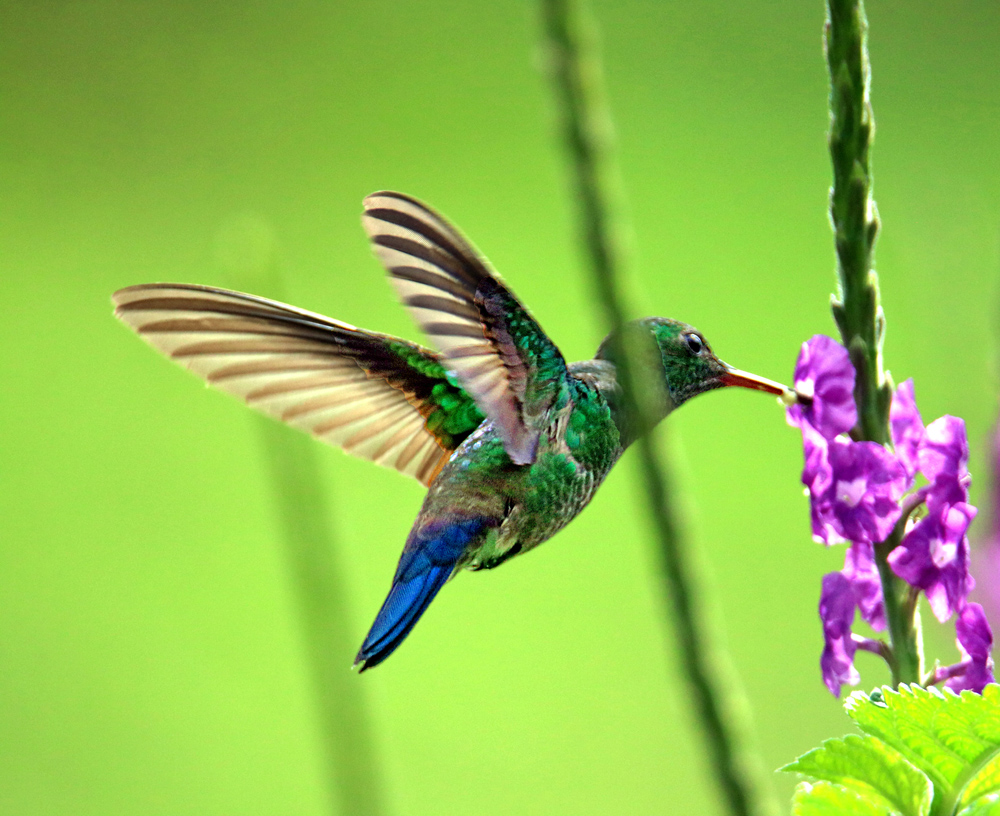
¡Pura Vida!
When I look at only the head, I think this is a Black Vulture, but the arrangement of white feathers (in shadows) on the wings show that it is a Turkey Vulture and the lack of a red head, makes it a juvenile. Vultures fly overhead regularly, helping to keep the neighborhood clean. 🙂 And they make flying look so easy and graceful that I can’t stop trying to photograph them, even though seldom a good photo with shadows and movement, but fun anyway! 🙂 And my Turkey Vulture Gallery of course!
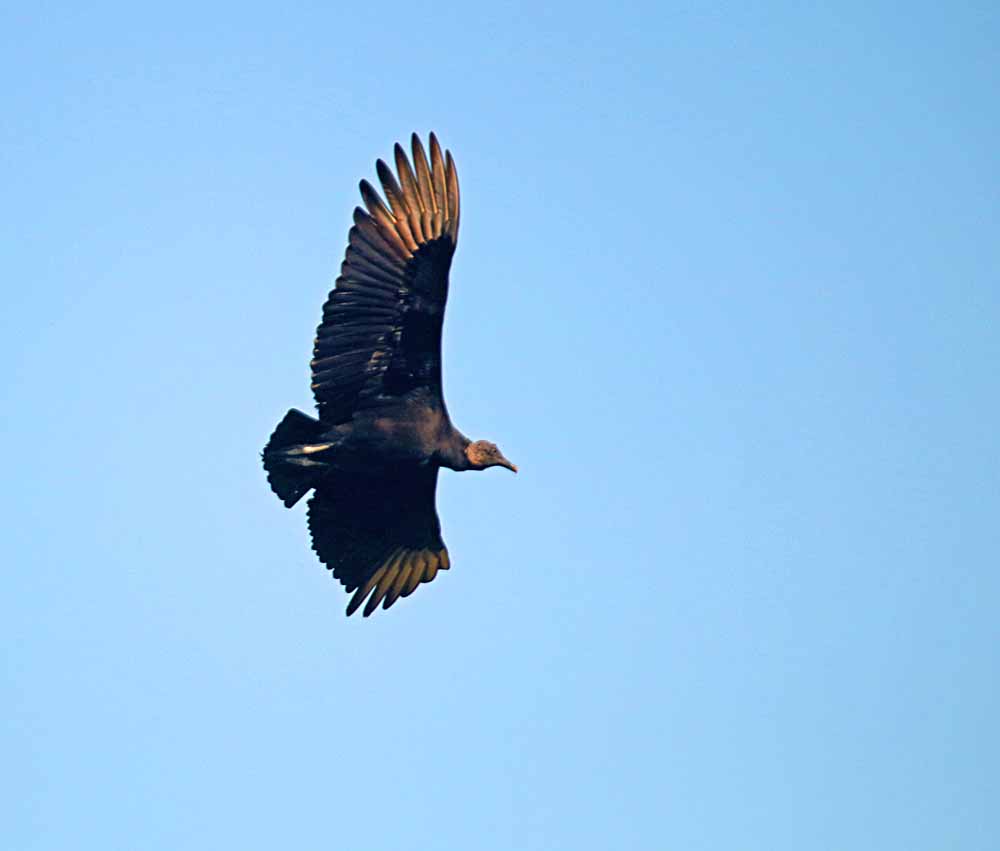
¡Pura Vida!
Continue reading “Juvenile Turkey Vulture”“The Clay-colored Thrush in Costa Rica eats a varied diet of insects, earthworms, and other invertebrates, supplemented by fruits and berries. They are found in diverse habitats across the country, including forests, open woodlands, gardens, and urban areas. They forage primarily on the ground by hopping and probing leaf litter, but also eat fruit from trees.” ~Google AI Overview. See more photos in my Gallery Clay-colored Thrush.

¡Pura Vida!
The adult males are a strong black & blue while the adult females are brown. It is the immature males that have the mottled brown, blue & black look like this. See more photos in my Blue-black Grassquit Gallery. Including my favorite shot of females lined up on a barbwire fence at Carate adjacent Corcovado National Park back in 2009 on my first trip to Costa Rica. 🙂
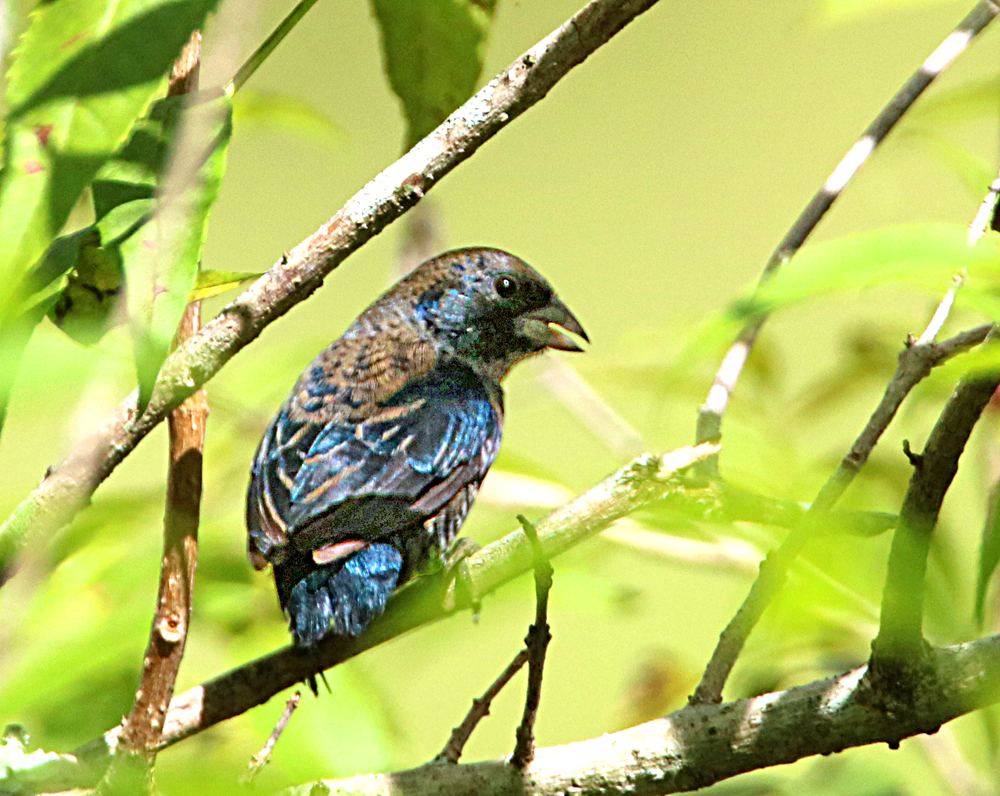
¡Pura Vida!